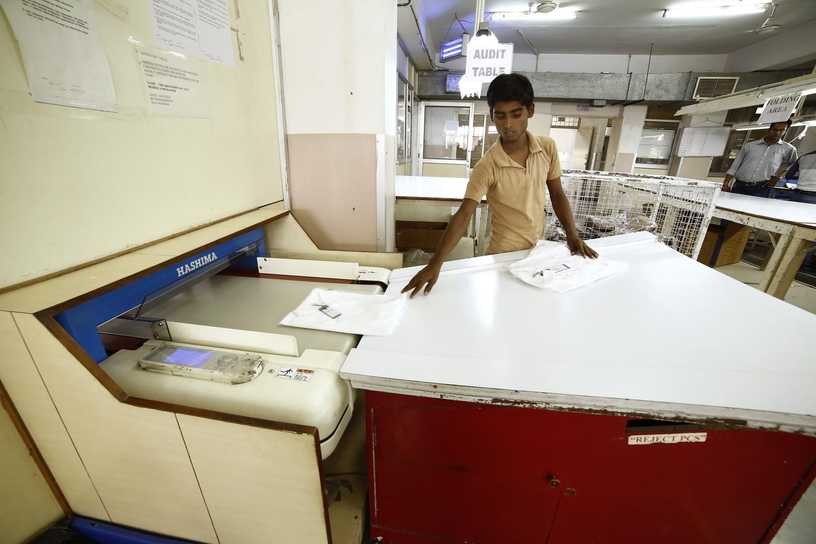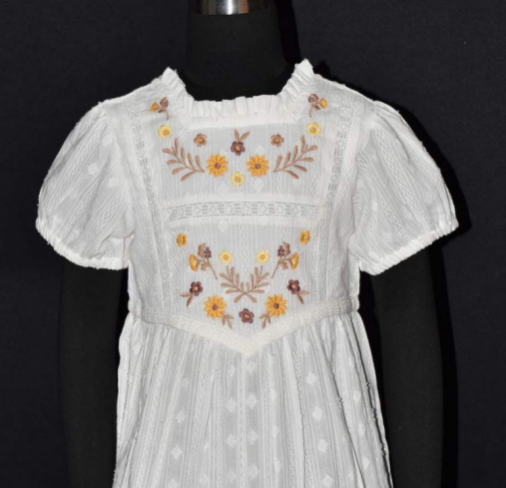What Are Automated Fabric Inspection Machines & Why Should You Use It?

Automated fabric inspection machines can be a lifesaver when you are trying to manage your production costs and keep your fabric wastage in check. Due to human error or otherwise, fabric can often have imperfections such as spots, dirty marks, tears, holes, or weaving problems. This is a common problem; however, without adequate monitoring of the fabric, before you start your manufacturing process, these imperfections can lead to complete wastage of completed garments.
So, to avoid these wastages, manufacturers often have to rely on manual labour to ensure the fabric is flawless and ready for manufacturing. However, manual inspection is tedious and can be timeconsuming and prone to errors. This is where automated fabric inspection machines can function efficiently and effectively to solve the problem at hand. So, let’s review the benefits of using automated fabric inspection machines. But first, let’s understand how these machines work.
How Does Automated Fabric Inspection Machines Work?
Automated fabric inspection machines can work seamlessly and doesn’t require human supervision during functioning. The human input needs to be set up before the machine starts, which involves defining the type of defects the machine should detect and the range of what can be considered passable. Once the input is set, the operator feeds the fabric into the machine.
After placing the fabric in, the machine starts working by using specialised lighting that offers completely even lighting across the fabric sheet and high-resolution cameras. The high-resolution cameras track every part of the fabric being fed into the machine. With computer analysis of the captured video using complex algorithms, the machine can detect predefined flaws in the fabric and accurately report them.
Benefits of Using Automated Fabric Inspection Machines?
-
More Accurate
Machines are more accurate than human beings in certain tasks with lower chances of errors. For meticulously and often mundane tasks like fabric inspection, machines are able to fulfill these requirements far better without any problems, allowing manufacturers to improve their product quality overall.
-
Efficiency
Machines are consistent and they are also extremely efficient. They can function significantly faster compared to human beings doing the same work, which will allow for manufacturers to improve their production capabilities without any hindrance.
-
Non-Stop Operations
Machines do not get tired and can work for longer hours without any problems. This allows manufacturers to improve their manufacturing capabilities and improve the manufacturing output of the assembly lines. Non-stop operations also offer capital benefits for manufacturers.
-
Cost Savings
As mentioned in the previous point, machines though require a huge upfront payment, they offer cost savings in the long run. This is mainly because these automated fabric inspection machines can work in an automated manner and for longer hours compared to manual inspectors. This allows businesses to avail of a better ROI using these machines.
-
Enhanced Reporting
With automated fabric inspection machines, it is possible for you to look for various flaws and imperfections at the same time. In fact, even for allowed imperfections, you can get a complete list of them to keep a lookout for the overall quality of the fabric. This type of meticulous reporting and data storing can help you improve your production quality significantly.
-
Scalability
Using automated machines allows you to scale your business significantly. When you are able to use machines for certain tasks, it frees up your skilled personnel to work on specialised tasks, improving the production capacity of your production unit. Overall, this practice allows scalability of production units and helps improve business revenue over time.
-
Competitive Advantage
Lastly, using machines offers a competitive advantage to your production unit over others. With better efficiency in your production assembly line and better quality fabric being used, it improves the output quality for your manufactured garments. This improves their market demand, which will certainly help you gain a competitive advantage over other industry players.
Conclusion
Though manual inspection is necessary from time to time, automated fabric inspection machines can make the manufacturing process more efficienct and easier for manufacturers. If you want to learn more about these machines or the garment manufacturing process in general, check out CheerSagar. CheerSagar is one of the major apparel manufacturers and exporters from Jaipur. Check out the website to learn more about the services.
Related Blog
7 Sewing Machine Technologies That Have Helped Improve Women’s Wear Manufacturing
Sewing machines, much like a lot of the technology around us, have come a long way from what they used...
India Vs. China: Which Country Is Better For Sourcing Readymade Garments In 2025?
The global apparel sourcing landscape has been shifting rapidly over the past few years. There is an increasing desire among...
Unravel The Enigma Surrounding The Jaipur’s Clothing Industry
The Indian textile industry has always been under the spotlight for diversity in culture, practices, and traditions. It is one...




